There are shady areas in any garden. And most of us think that it will not be possible to arrange them in a dignified manner. What to do, shadow... But this statement is quite debatable. So which plants to choose for shaded corners? And how to effectively design such zones? Everything in order.
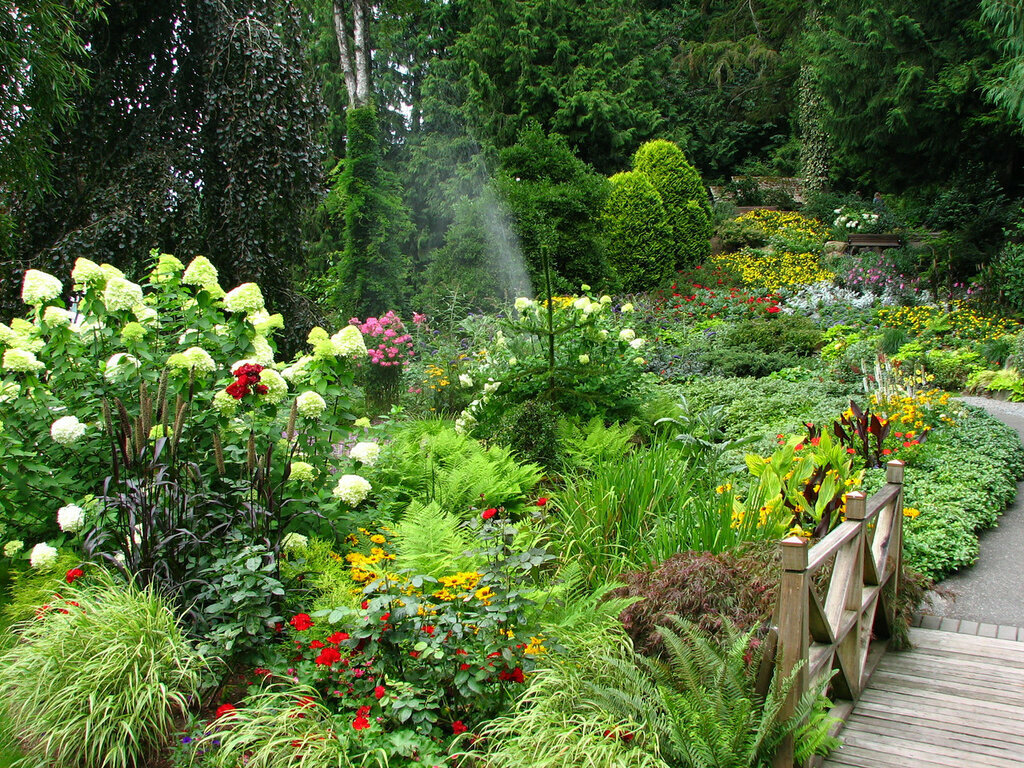
In any garden there are always areas where the sun's rays infrequently penetrate.
Features of shade-loving plants
Content
- Features of shade-loving plants
- Plant species
- Fruit trees
- Fruit shrubs
- Trees or shrubs
- Shade-loving flowers
- How to grow a plant in the shade
- VIDEO: 10 best perennials for shade in the garden.
- 50 garden decor options with shade-loving perennials:
A shady area is a place where sunlight falls no more than three hours a day. The rest of the time there is a deep shadow. There are such areas in absolutely every garden, these are the northern or western slopes (if the area is embossed), as well as areas near the fence or under the spreading trees. Also, in the everyday life of gardeners, the concept of "rarefied shade" is used - these are areas where the sun's rays fall through the foliage of trees.
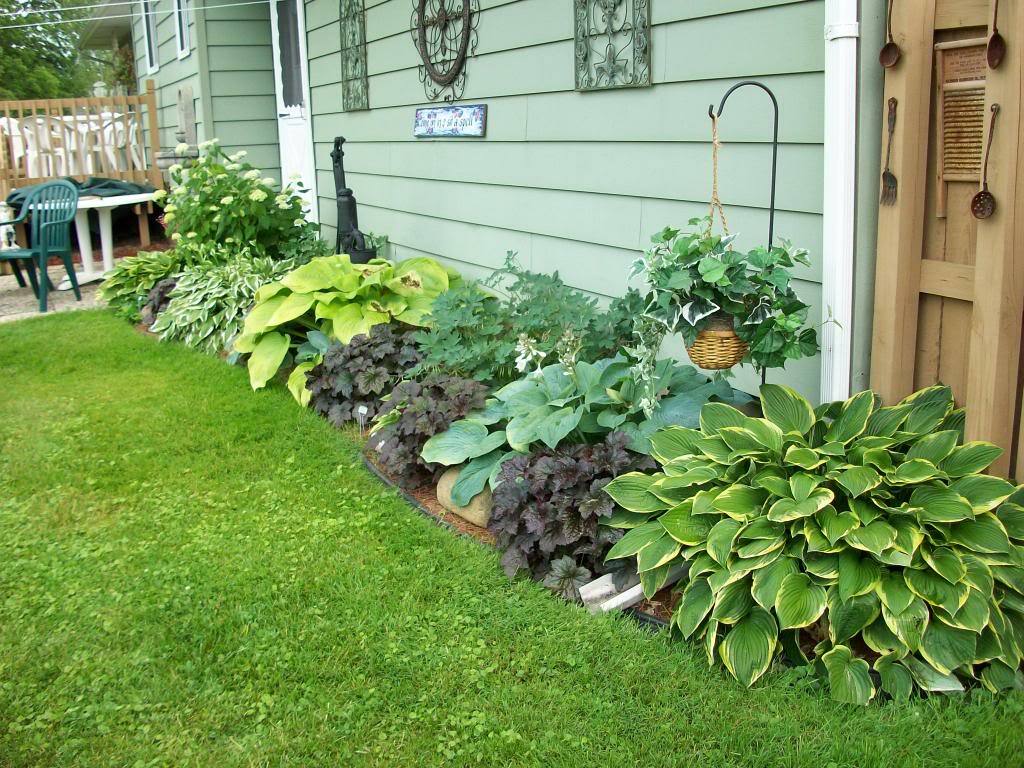
Even the most shady garden can always be decorated with beautiful shade-loving perennials.
And for most owners of country houses, it is the shady places that are the most beloved. Often there is a gazebo for relaxation or a bench. But, unfortunately, not every plant "shares" people's desire for shade.
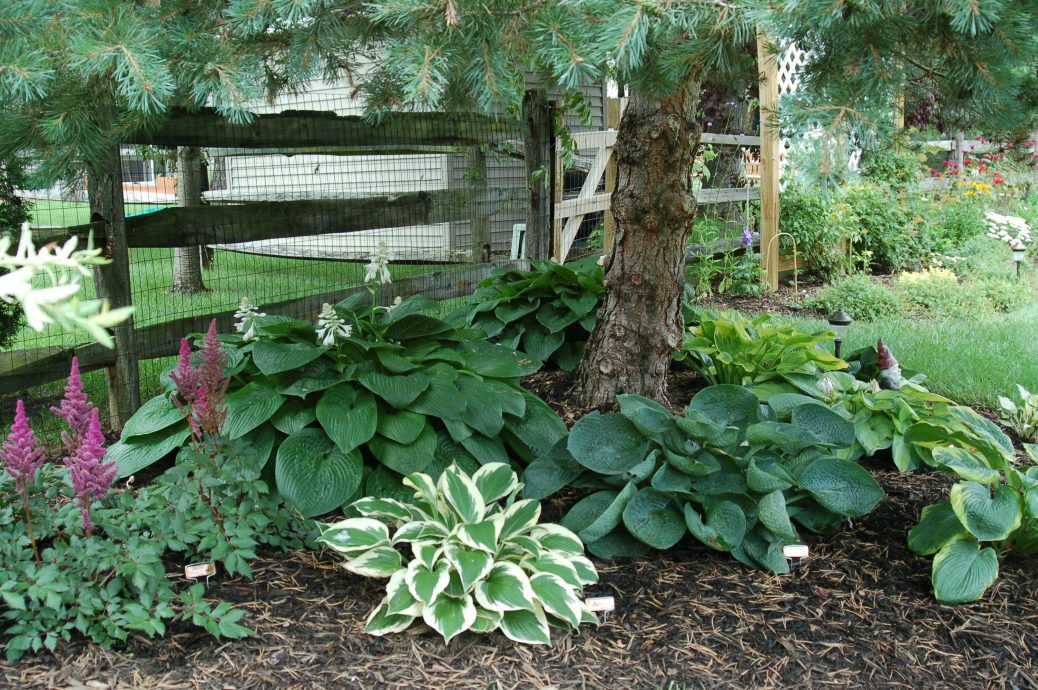
There are many plants, including those for which shade is beneficial to maintain quality growth and healthy development.
Let us note right away that the definition of "shade-loving" is not entirely correct. The thing is that sunlight is necessary for each plant, only in a different amount. And plants cannot love the complete absence of light, they simply die, because the sun is the basis of their life. Only there are species that do not feel well when exposed to direct sunlight, but which are quite comfortable in diffused lighting.
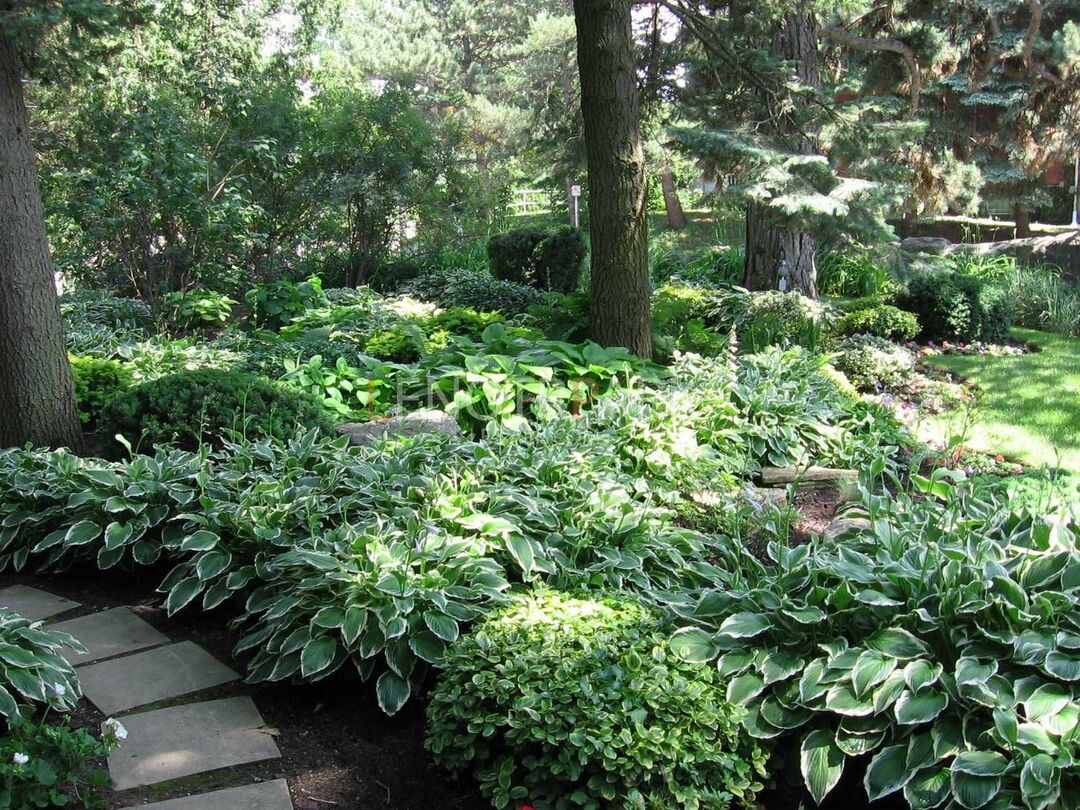
The more tall fruit trees, outbuildings and the higher the fence in the garden, the shader the garden plot will be.
In the everyday life of gardeners, the words "shade-loving" and "shade-tolerant" are considered synonyms. Under these scientific names, for most homegrown landscape designers, there is nothing more than an unpretentious plant that feels great under trees or behind a house.
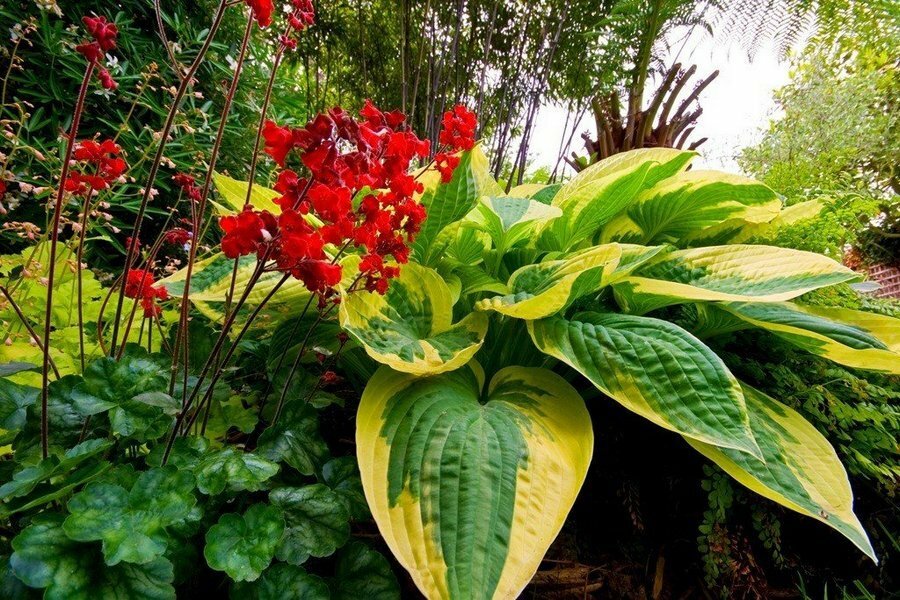
Shade-tolerant plants tolerate periodic and constant shading and this is their main difference from light-loving crops.
All shade-loving crops are divided into two groups: decorative deciduous and flowering. The first category includes hosta, fern, euonymus, Thunberg barberry. And the category of flowering includes weigela, matthiola two-horned, rudbeckia, forget-me-not, daisy, as well as lungwort, hydrangea, honeysuckle and a number of others.
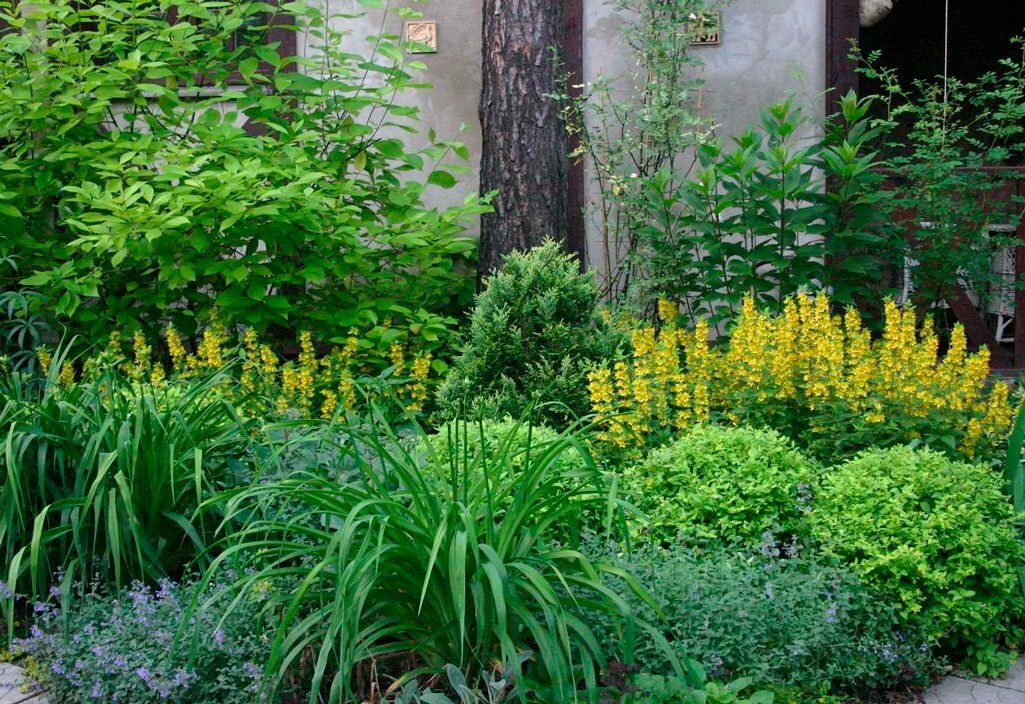
There are many perennials suitable for growing in shady gardens.
Plant species
Imagine that the "assortment" of plants that perfectly tolerate the absence of direct sunlight is large enough. It can be both decorative crops and fruit crops. Annual and perennial species. Among them there are tall and undersized, flowering, or species with spectacular greenery, perennial and annual crops. These can be shade-loving shrubs, grasses and flowers.
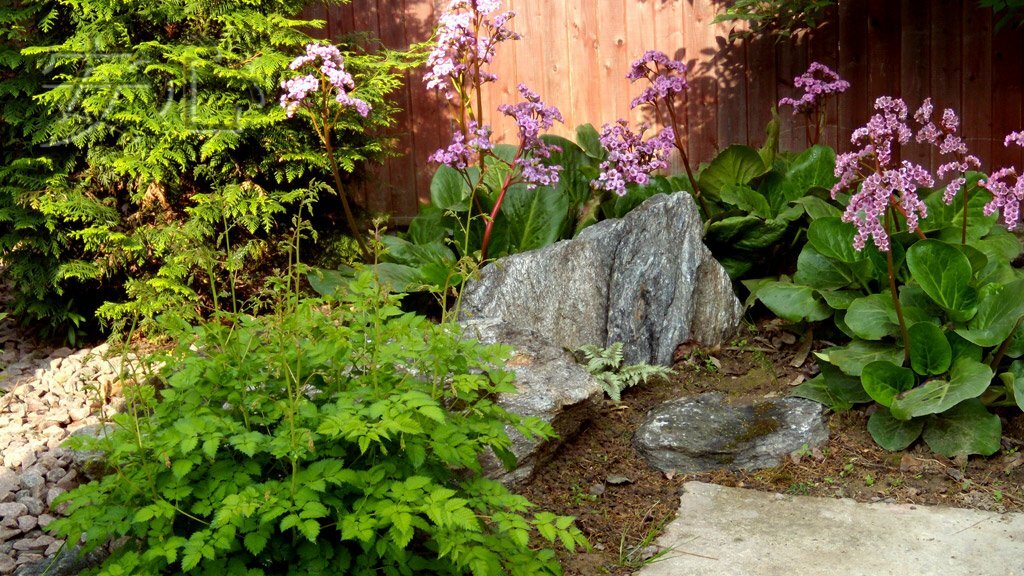
Flowers and herbs grow up to 15-45 cm and can be used both as a background planting and to create decorative accents of a garden composition.
Fruit trees
Most fruit trees love light. And those who do well in the shade should rather be called the exception to the rule. These include:
- Cherry. Gardeners claim that it can be safely "lodged" in the most secluded corner of the garden.
- Cherry plum. Although this culture is southern, it suffers well from lack of light and bears fruit abundantly.
- Plum. The key is the variety of this fruit tree. If she gives blue fruits, then the shadow is not afraid of her. But a plum with yellow fruits in the shade does not survive.
- Apple tree. The most terrible for this tree is the lowland, but the shadow, on the contrary, does not present any problems. It develops well and bears fruit.
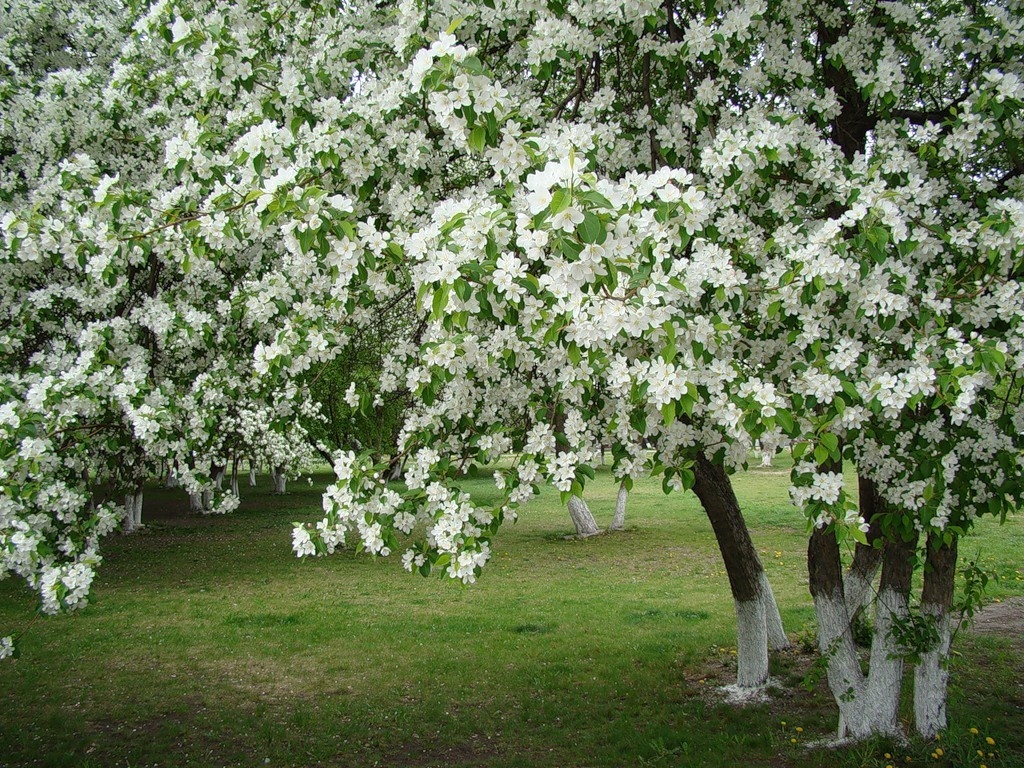
The apple tree is the most unpretentious tree.
Fruit shrubs
Immediately, we note that there are much more shade-tolerant shrubs than similar trees. The main thing to remember is that any culture will die without lighting at all.
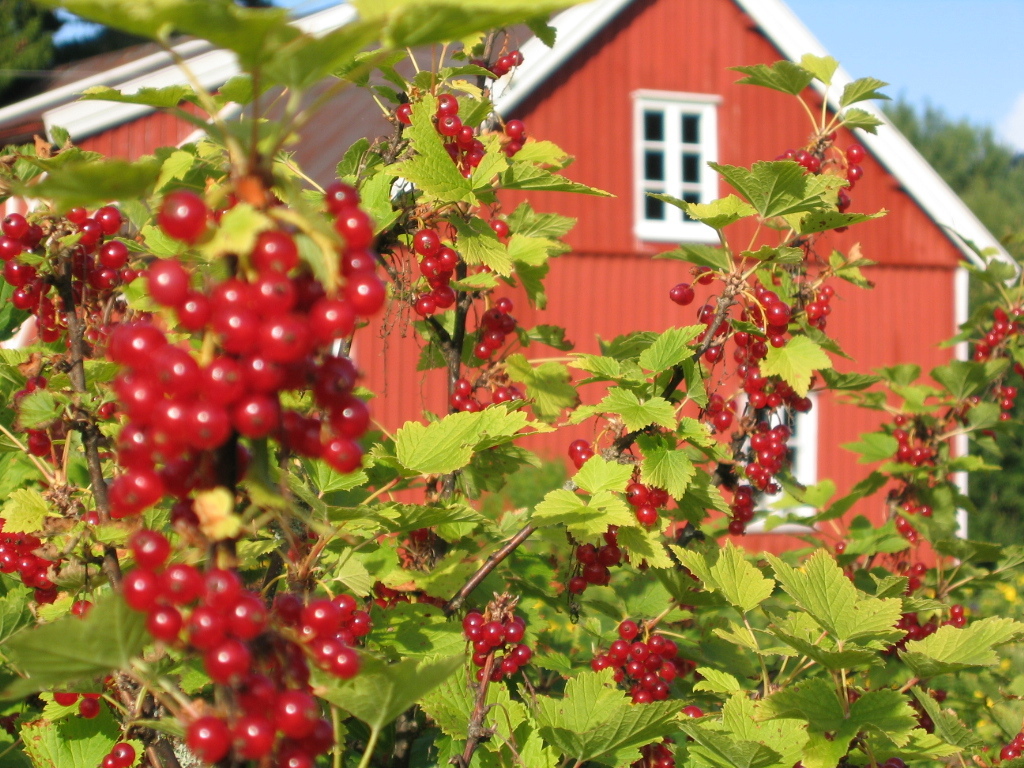
Currant is a shrub that can be found in any vegetable garden or garden.
- Currants of different varieties: red, white, black. It is important not to forget that red tolerates shading worse than black. But, for red currants, a good overhead light is much more important, and it can do without sufficient side lighting.
- Raspberries. This culture is traditionally planted in insufficiently lit areas, but it is not recommended to abuse the lack of light.
- Kalina.
- Barberry.
- Honeysuckle.
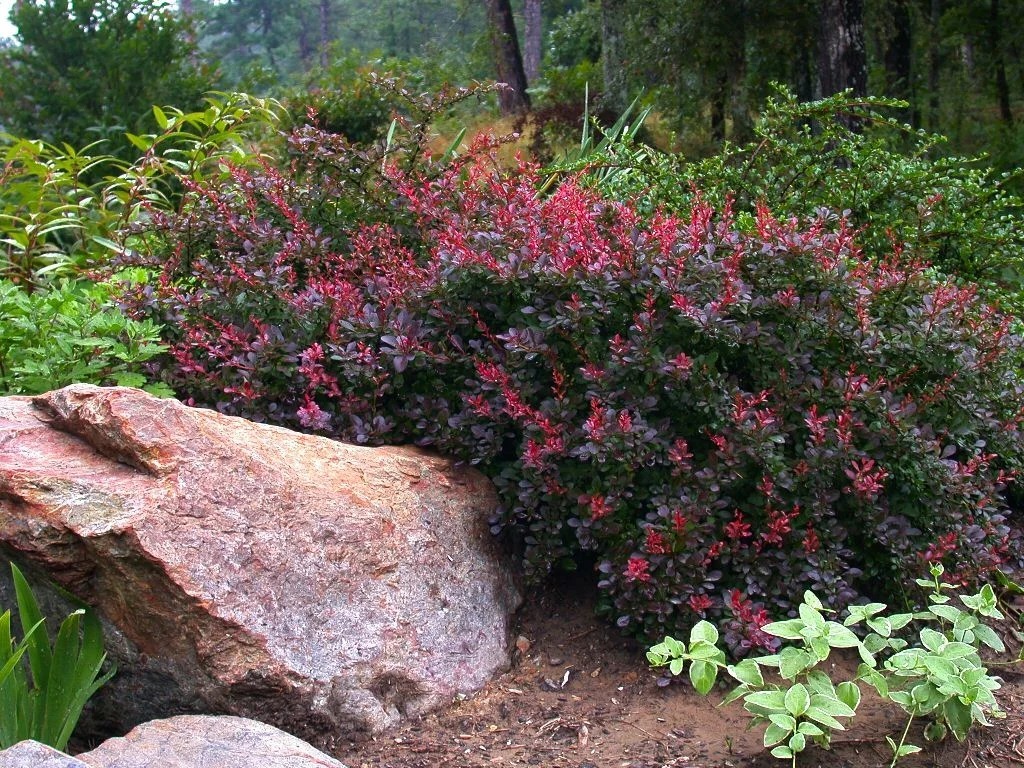
Barberry is a popular ornamental plant, represented by a large number of varieties.
Trees or shrubs
Shrubs are especially popular with gardeners. This is due to the variety of their types and external form. However, there are also intermediate options, which you can't tell right away: is it a tree, or a bush?
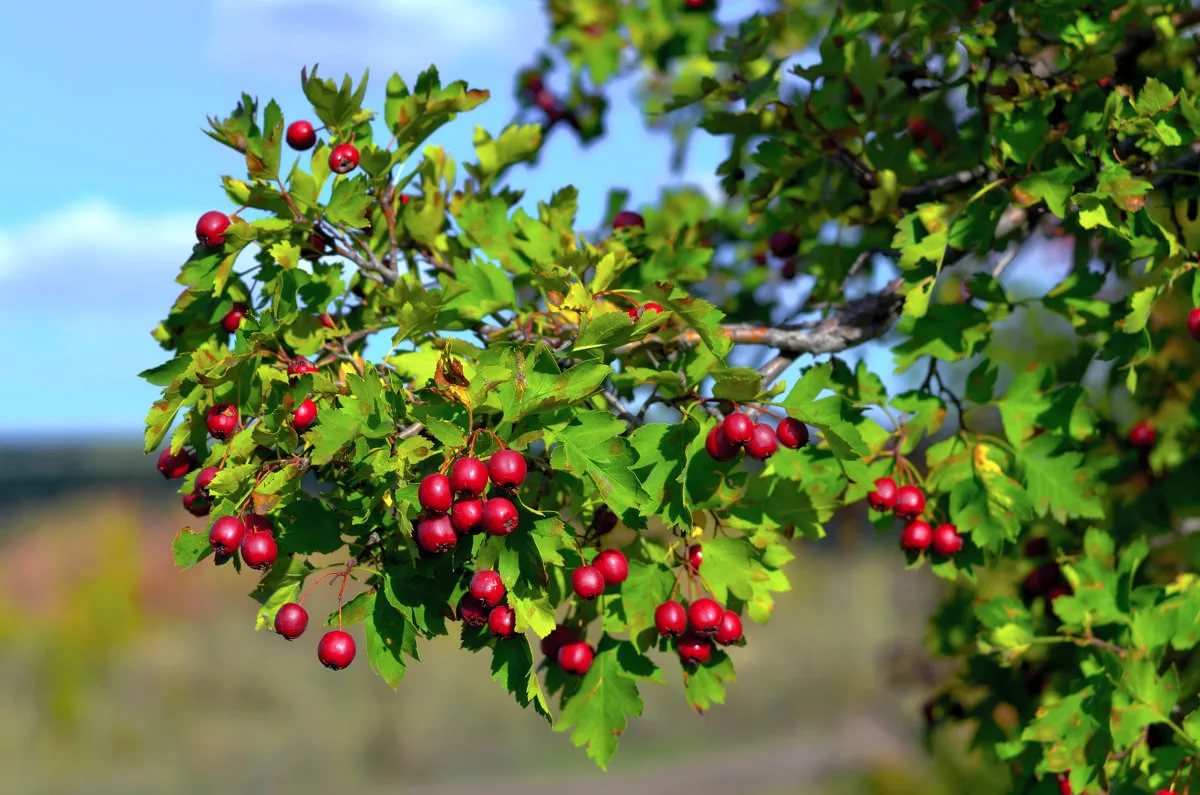
Hawthorn bushes are an excellent decoration of a personal plot at any time of the year.
These include hawthorn, walnut, some types of willows and elms. It all depends on the way the plant is pruned and the conditions in which it develops.
Shade-loving flowers
Tiarella cordifolia is a bright representative of perennial plants for shady places in the garden. Its leaves with pinkish veins appear on the surface of the earth immediately after the snow melts. After flowering, tiarella releases a mustache with rosettes, and over time, a green carpet grows on the site. The flowering time depends on the variety of tiarella.
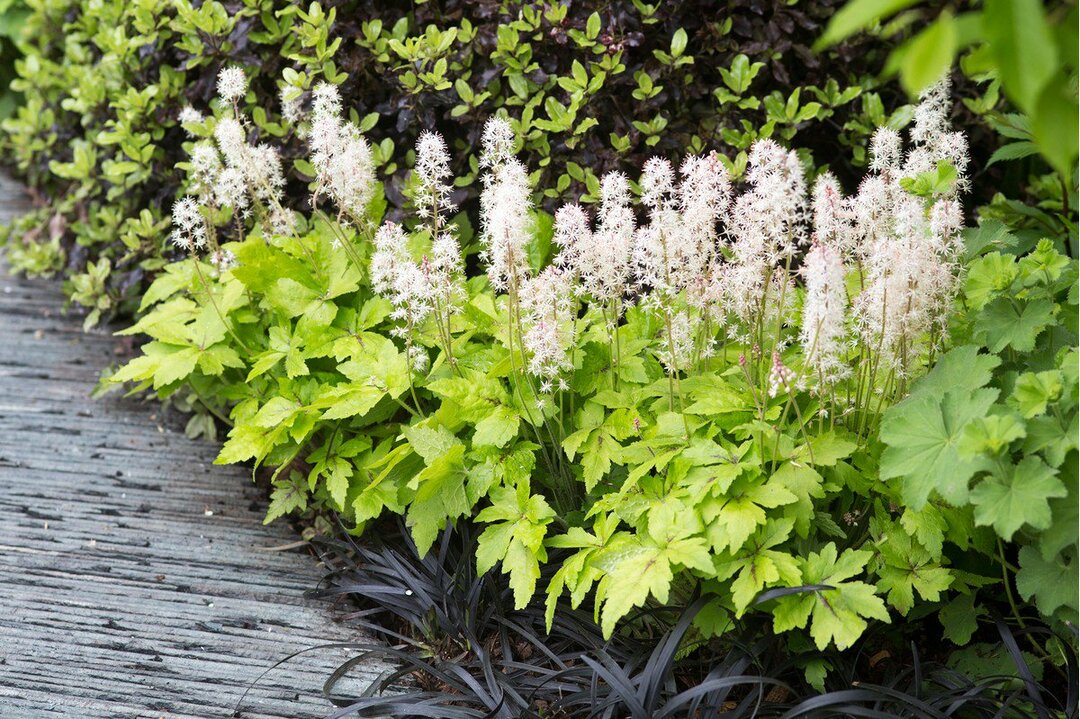
Tiarella is a very popular plant among gardeners.
The plant is considered a curb and thrives on soil rich in humus and with sufficient moisture. But direct sunlight and lack of moisture will destroy the thiarella.
Horny Goat Weed is a herbaceous perennial from the barberry family. It is appreciated not only for its visual appeal, but also for its healing properties. It feels great under trees. Horny Goat Weed is surprisingly unpretentious and calmly endures the summer heat, but an abundance of moisture is important for her. In this case, good drainage of the soil is important, otherwise the roots will begin to rot.
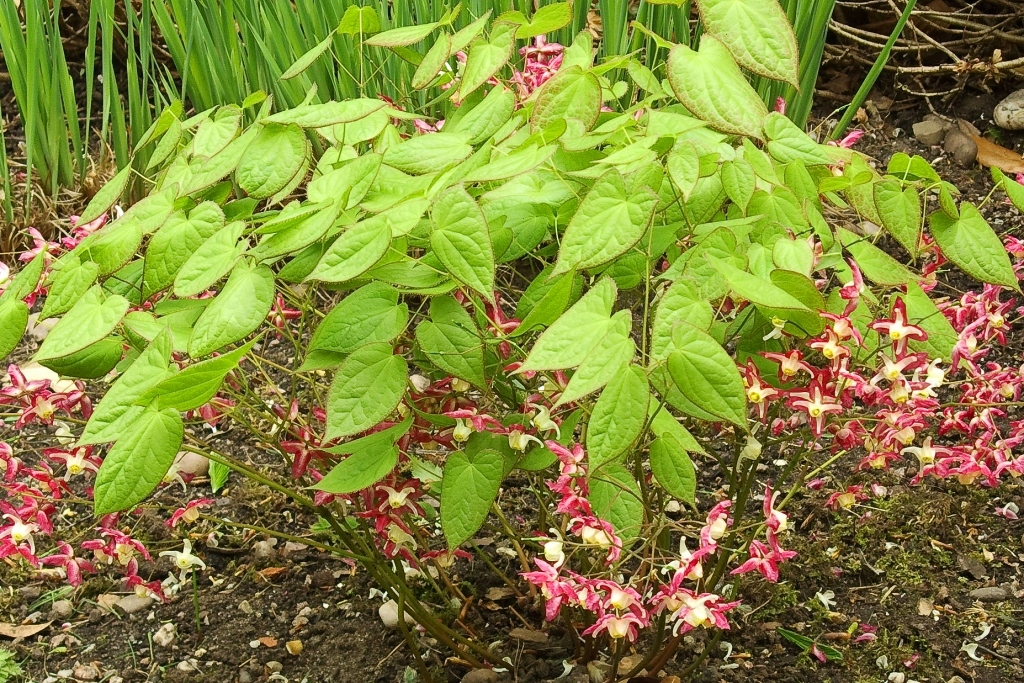
Horny Goat Weed can be of different sizes - as a miniature plant, and grows up to a meter in height.
In order to avoid the appearance of rot, it is recommended to mulch the soil or weed often. The Horny Goat Weed is also not adapted to severe frosts, therefore, so that the plant does not die in the cold season, it is covered with spruce branches or leaves. After the snow melts, remove old leaves and mulch, and after a while new shoots appear.
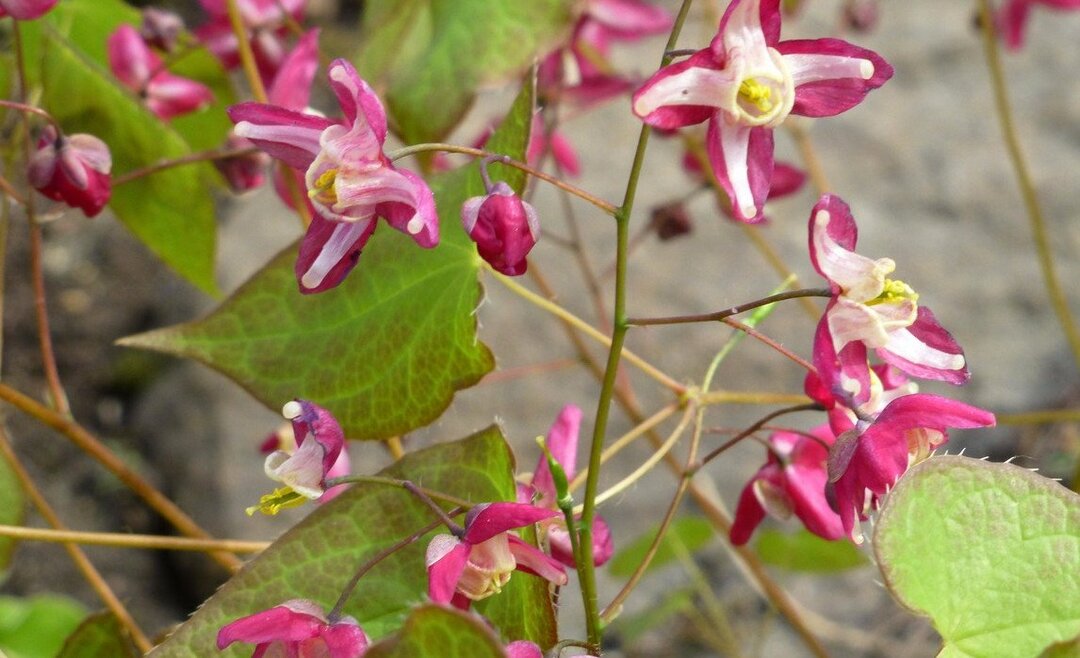
Being not only a decoration of the garden, but also an effective medicinal plant, the mountain woman deserves a place of honor in the flower garden.
Evergreen periwinkle is a perennial, unpretentious shade-loving plant for the garden. Its distinctive feature is considered to be its growth rate. Every year, the shoots are able to grow up to 90 - 100 cm and take root in each nodule. Periwinkle flowers come in different colors: blue, pink, as well as with white and golden borders.
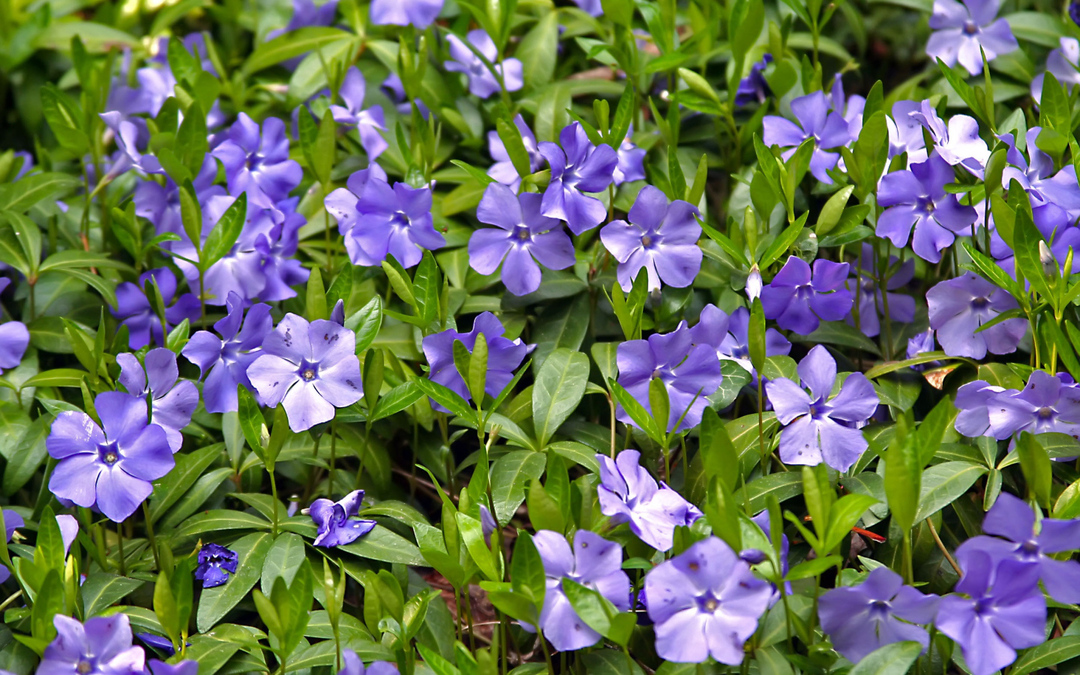
Periwinkles are traditional ground cover plants, especially for shaded areas.
Periwinkle holds the palm in the "most unpretentious" category. The only care that may be required is watering in case of prolonged drought. More often, the problem is too quickly growing shoots, which constantly have to be cut off so that the periwinkle does not fill the entire area. In addition, there has not yet been found such a weed that would prevent the periwinkle from living and flourishing, so you should weed the area when the weeds annoy you. After abundant flowering, periwinkles are globally trimmed.
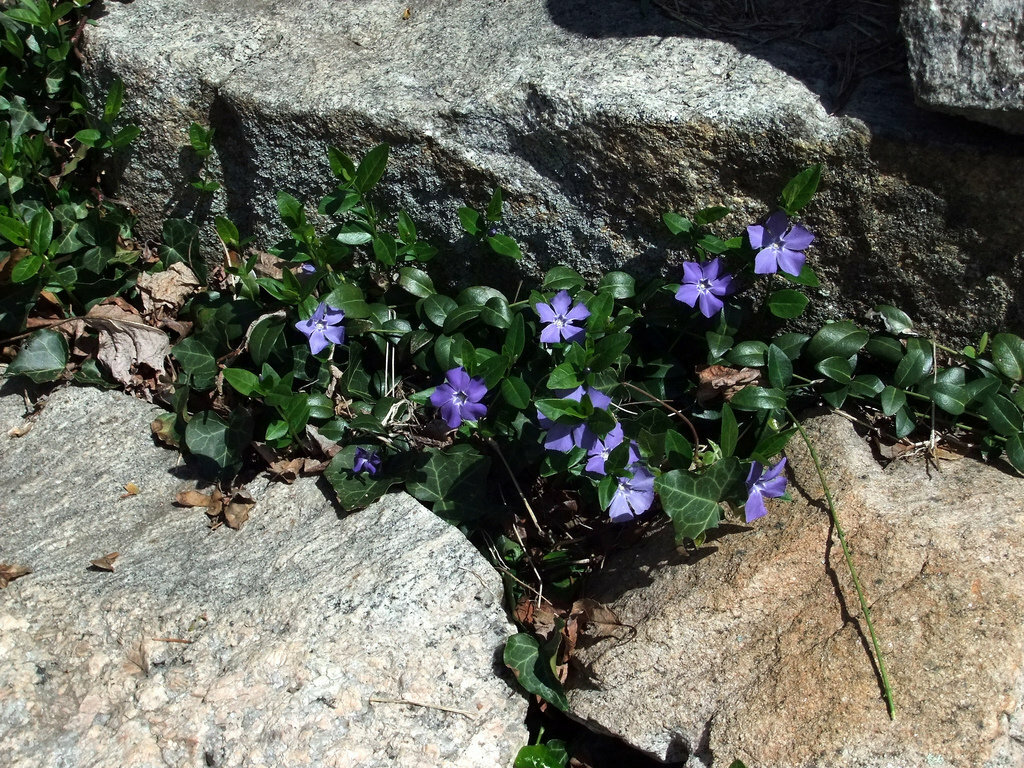
In recent years, landscape architects have often used it in urban landscaping.
Badan is a plant with dense leathery leaves, ideal for a shady area. Decorative leaves are pleasing to the eye from early spring to late autumn. Badan's roots are superficial, which means that a deep fertile soil layer is not required. The plant has unusual bright pink flowers. But the more shady place is chosen for its "habitation", the weaker the bloom will be.
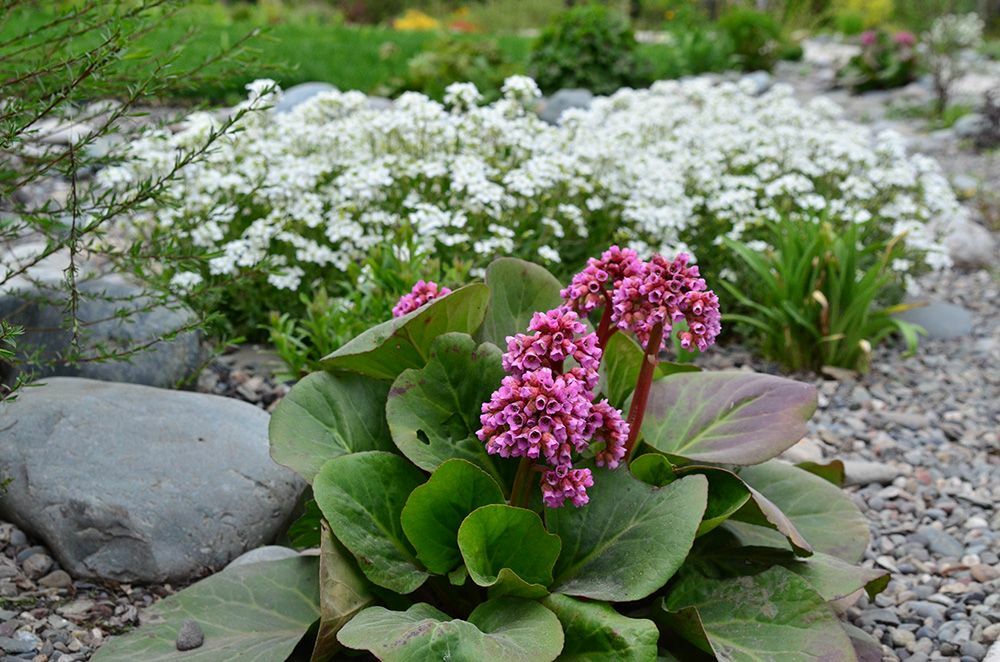
An unusually beautiful berry plant, covered with small pink flowers.
The whole care is as follows: in the fall, dry leaves are removed, and in the spring, the inflorescences that were able to overwinter are cut off. In the first season of planting badan, it is recommended to mulch the ground. Badan is very unpretentious, but does not tolerate drying out of the soil. Very "responsive" to mineral fertilizers.
Important: badan is difficult to "survive" the transplant, but it grows well in one place for more than ten years.
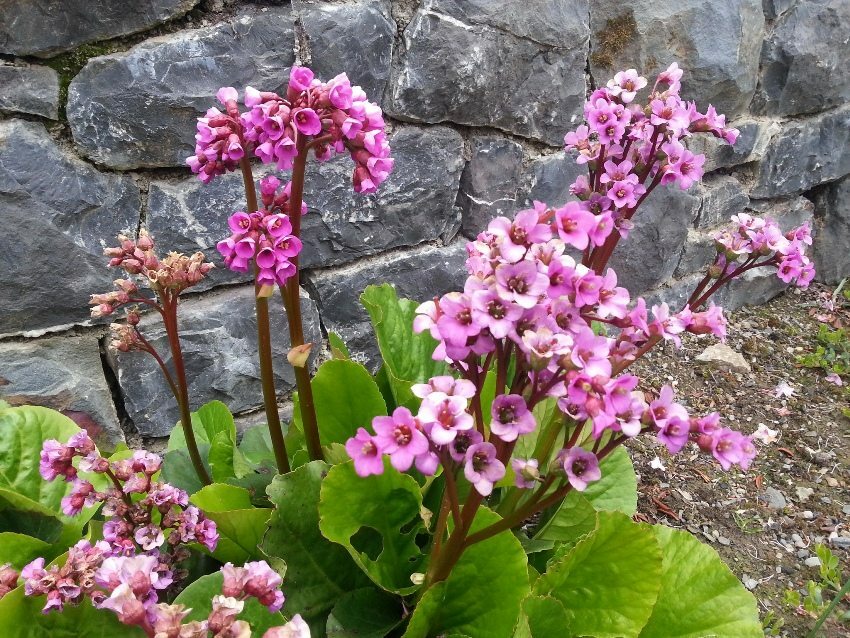
Planting badan and caring for it in the open field will not cause trouble.
Ferns are another frequent visitor of shady areas. They love moisture very much, so if you want a fern to delight you with its rich greenery, be sure to water it.
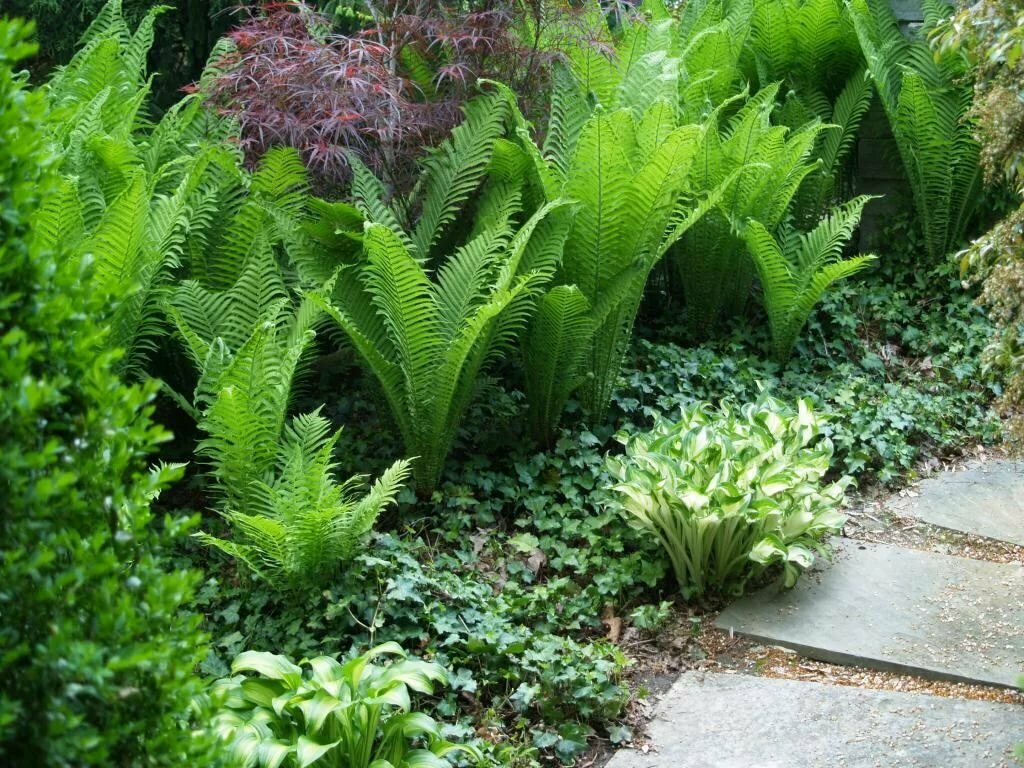
Ferns have become especially popular lately due to their beauty and amazing shade tolerance.
Geranium is large rhizome. Of course, more often we are used to seeing geraniums in pots on the windows, but this variety is no less attractive and easy to care for. Grows in shady places, blooms profusely in June. It does not grow as a bush, like an indoor "relative", but creeps up underground shoots. Thick stems fall to the ground, take root and become a carpet of bright colors and interesting carved leaves.
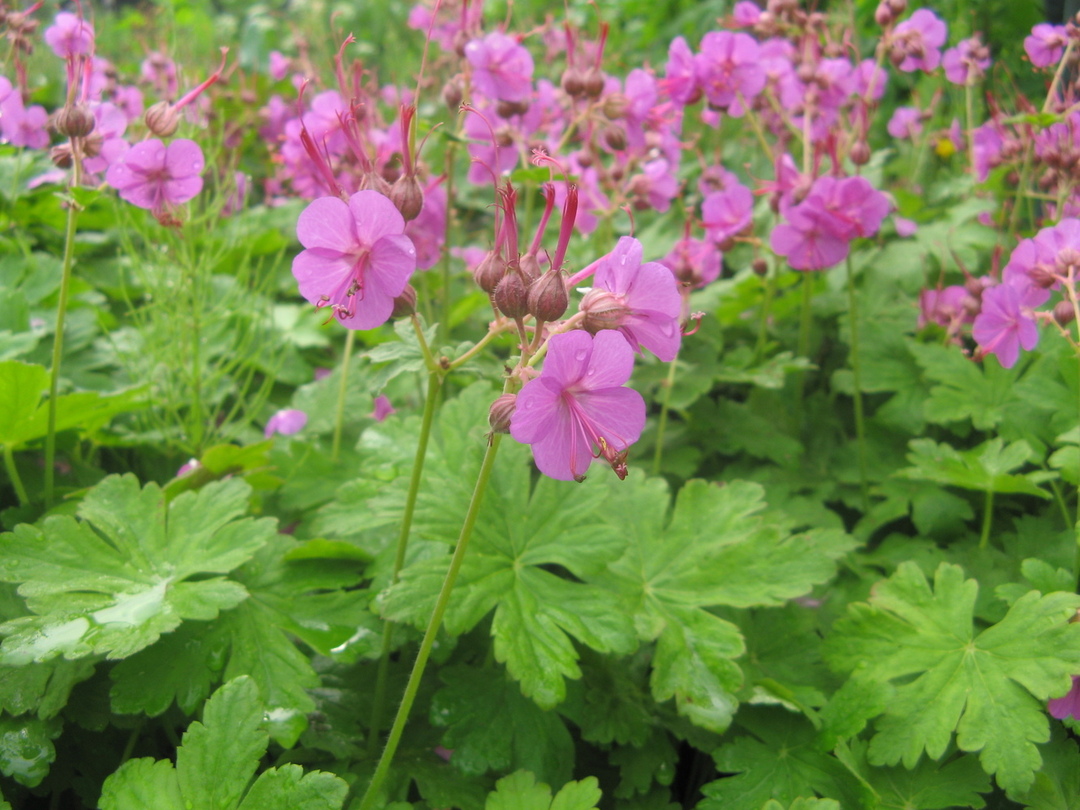
Today, perennial large-rhizome geranium is an unpretentious species for a garden, flower beds and borders.
The plant is very actively spreading. Feels great on the soil without any fertilizers and top dressing. And even drought is not a problem for her. Grows in full sun or partial shade. It can be overly intrusive due to its rapid growth, so it is important to control its location. Usually such geraniums are planted next to conifers, they look good in this combination and perfectly "get along" with each other.
A close "relative" of the large-rhizome geranium is dark or red-brown geranium. There are a large number of decorative varieties that differ in both the color of the leaves and the color of the flowers. There is also a feature: dark geranium is distinguished by abundant self-seeding, if you do not need additional planting material, then it is better to cut off the peduncles immediately after flowering. It blooms for a long period, so if you need a shade-loving flowering plant that does not require maintenance, geranium is at your service.
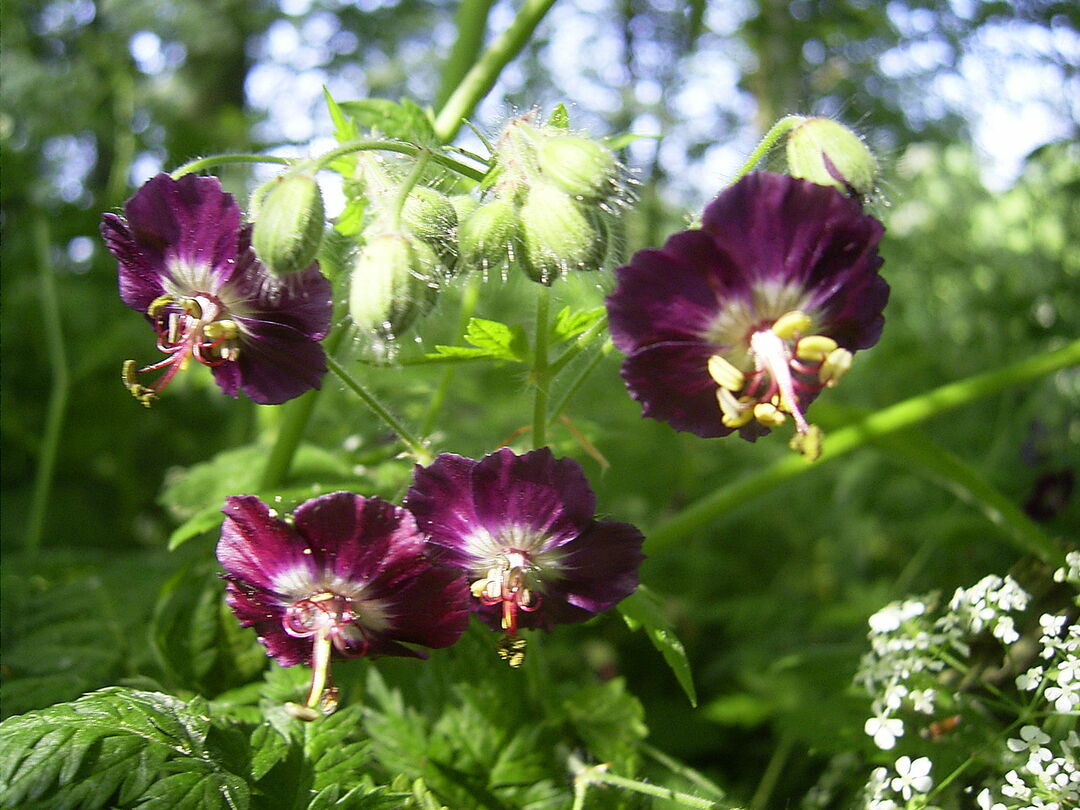
Dark geranium forms a rounded bush up to 80 cm in height.
Spotted Aronica is an unusual plant with arrow-shaped leaves that unfold in early spring. In mid-May, an inflorescence appears, somewhat similar to an ear. Arum looks most impressive in August, when the ear turns red. This plant will make your landscape non-trivial, add style and personality.
Hellebore. Distinguish between oriental and black. It opens immediately after the snow melts. It grows very slowly, does not like soil with high acidity. But adult plants give abundant self-seeding.
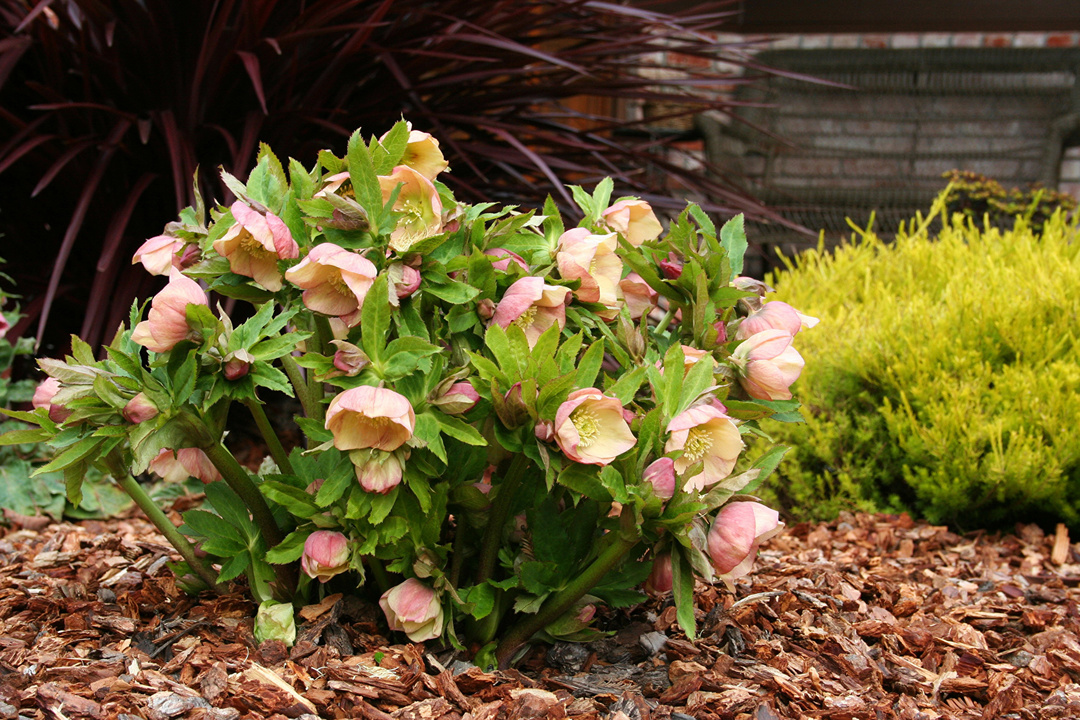
Hellebore is an amazingly beautiful plant that was popular in the Middle Ages.
The hellebore is in great demand, because it is a perennial plant, blooms early, does not require shelter for the winter period, is resistant to cold weather and grows quietly for many years in one place.
How to grow a plant in the shade
Shrubs and grasses that can grow in the least amount of sunlight are wrestlers by nature. They resist stress and uncomfortable living conditions. But still, you should carefully approach the choice of plants for the shady side, because if the red raspberry located behind home, will reward you with large and tasty berries, then white and red currants, alas, will answer you with a different effect, if they do not to help.
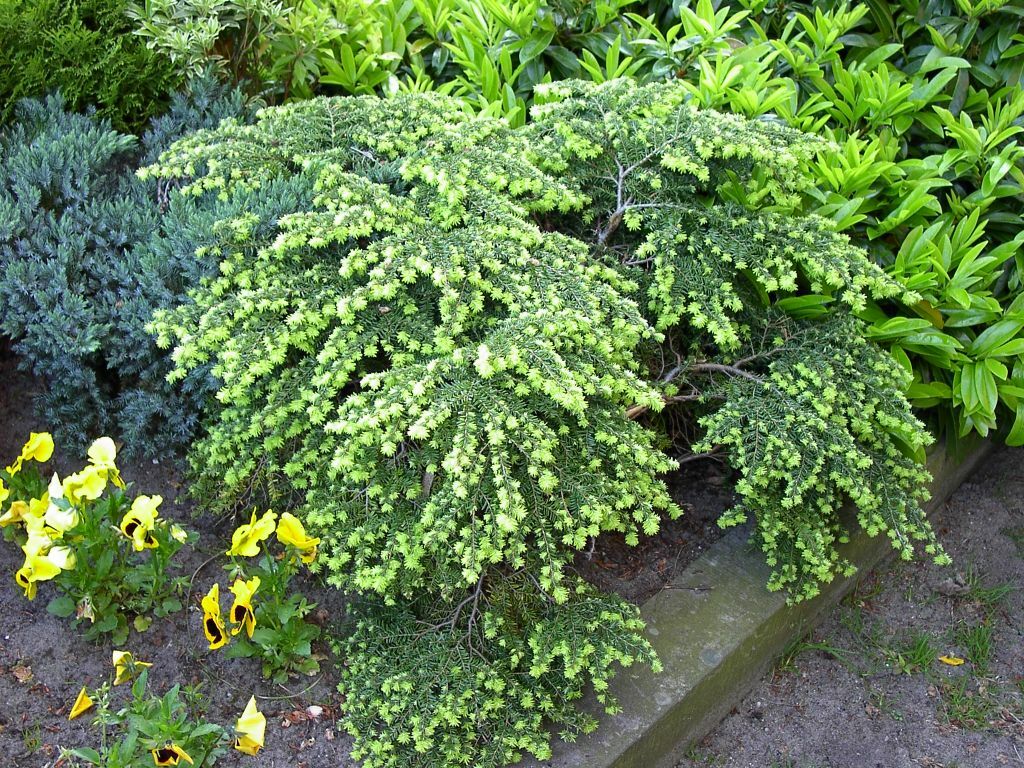
For shaded areas of the garden, the specifics of the culture itself should be taken into account.
So what affects the survival of plants in the shade:
- First of all, make sure you have enough moisture. Especially in hot weather, even on the north side of the house, the soil can dry out. Moisture is very much needed in late spring and with the onset of hot weather.
- Also, plants are dependent on fertilizers. An important point: with a lack of sunlight, you should be especially careful with nitrogen fertilizers so as not to overdo it. Otherwise, there is a danger that the plant will stretch out.
Before replanting a plant, make sure the soil is right for it. After all, there are species that feel great in acidic soil and not very well in neutral ones. If there is also unsuitable soil in the shade, this can destroy the plant.
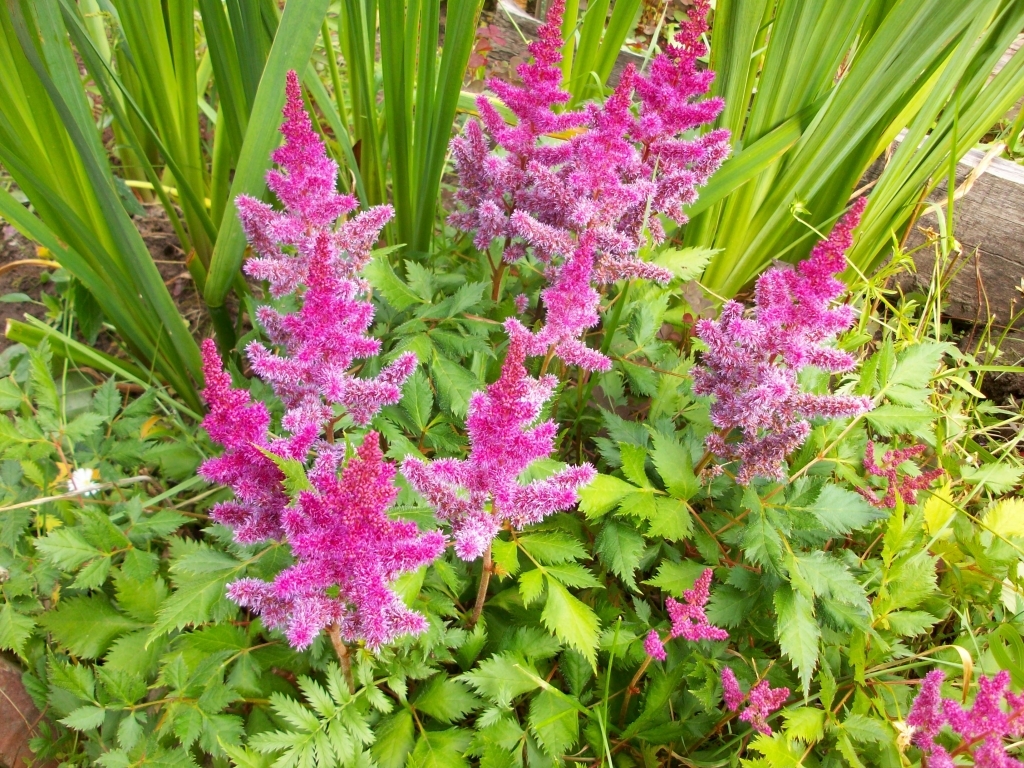
Most shade-tolerant species are naturally resistant to disease and pest attacks.
The soil is prepared in advance. Since most shade-loving garden plants have shallow roots, the soil for planting them should not be heavy. The more airy the topsoil is, the easier it will be for the plant to settle down and feel "at home."
It has already been mentioned that drying out of the soil should be avoided. But it is important not to allow other redness - waterlogging, since the roots will begin to rot, the plant will get sick or pests will appear. And then not only one plant will suffer, the whole garden may be affected.
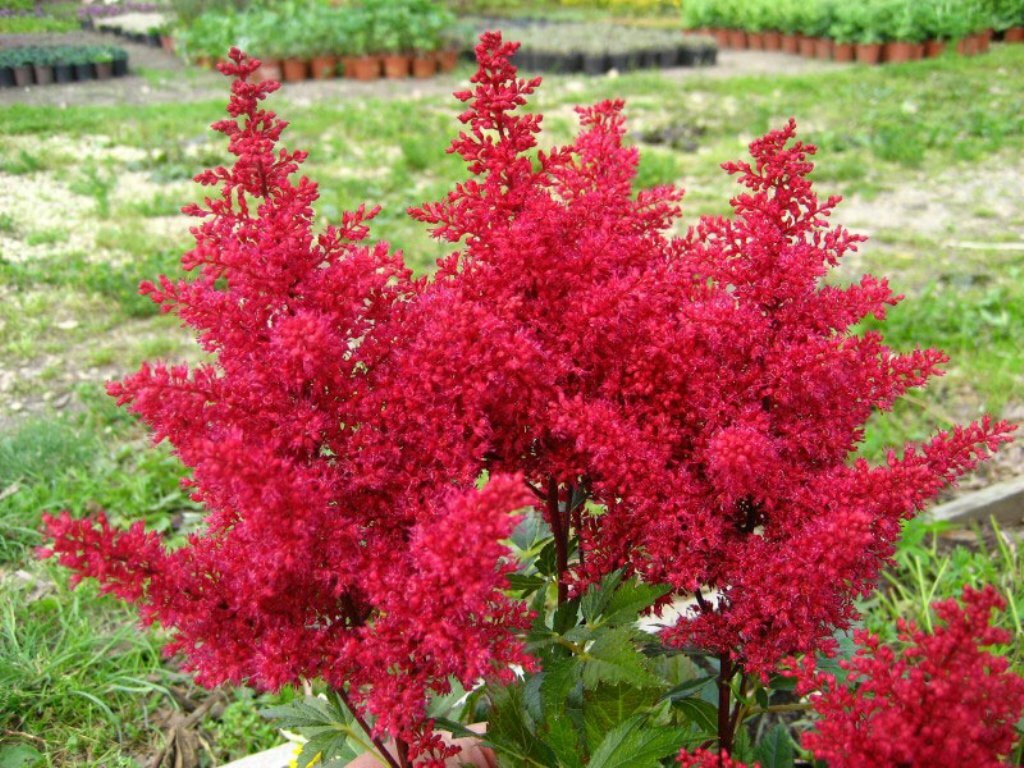
Plants that love shade, enliven the dark areas of the garden, delight their owners with bright colors for many years, while requiring almost no maintenance.
A suburban area where every corner has uniform sunlight is a pipe dream. Whether we like it or not, some areas are shadowed by a fence or a house, and some areas are shaded by trees. Be that as it may, even if your garden has more shady areas, this does not mean that you will not be able to make an interesting design, or get practical benefits from the beds. By choosing your plants wisely, periodically fertilizing the soil and keeping an eye on watering, you can create a wonderful piece of paradise.
VIDEO: 10 best perennials for shade in the garden.
50 garden decor options with shade-loving perennials:




